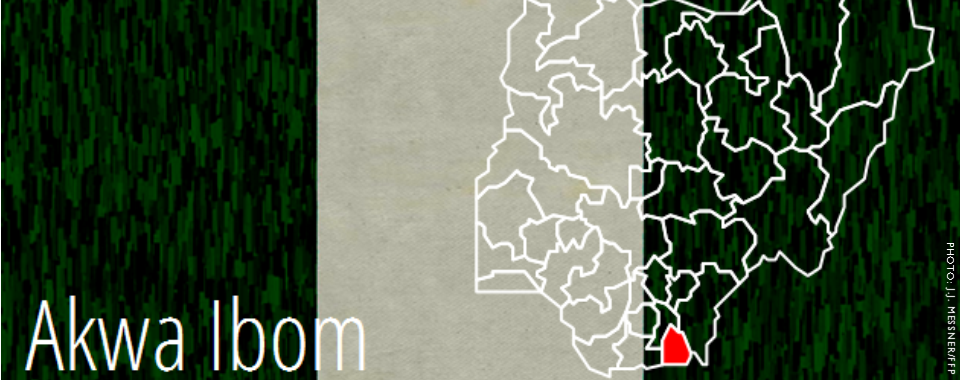BY NATE HAKEN AND PATRICIA TAFT*
Akwa Ibom has a population of about 3.9 million people according to the 2006 census. Predominantly inhabited by the Ibibio people, the state is also home to Annang, Oron, Obolo and Eket communities. Endowed with large deposits of crude oil, condensate and gas, Akwa Ibom is among the largest petroleum producers in Nigeria. Agriculture also constitutes an important income-generating activity in the state, particularly the farming of palm produce, rubber, cocoa, rice, cassava, yam, plantain, banana, maize, and timber.
Violence in the state was elevated during the gubernatorial elections of 2011. Following the re-election of Governor Godswill Obot Akpabio (People’s Democratic Party), however, the per capita level of violence dropped significantly. In the second half of 2013, violence trended upward, with incidents reported around the capital city of Uyo, the town of Ikot Ekpene, and the coastal Local Government Areas (LGAs) to the south, including issues of land conflict, political tensions, protests, and abductions. Overall, between 2012-2014, Akwa Ibom was the least violent state in the Niger Delta region as measured by reported incidents per capita. In early 2014, major incidents included the abduction of the Vice-Chancellor of University of Uyo by militants in May, and an inter-communal clash leading to the beheadings of three people in January. Incidents and fatalities decreased in the second half of 2014, representing a significant shift from the high levels of pre-election violence seen in 2011. Udom Emmanuel (PDP) won the gubernatorial election in April 2015.
This Conflict Bulletin provides a brief snapshot of the trends and patterns of conflict risk factors at the State and LGA levels, drawing on the data available on the P4P Digital Platform for Multi-Stakeholder Engagement (www.p4p-nigerdelta.org). It represents a compilation of the data from sources listed below, not necessarily opinions of FFP or any other organization that collaborated on the production of this bulletin.
The summaries draw on data collected by FFP’s UNLocK, the Council on Foreign Relations’ NST, WANEP Nigeria, CSS/ETH Zurich, NEEWS/TMG, Nigeria Watch, and ACLED integrated on the P4P platform. They also draw on data and information from “Violence in Nigeria: Patterns and Trends,” by Patricia Taft and Nate Haken (Springer Press, April 2015).
*Hannah Blyth and Ania Skinner also contributed to this report.
